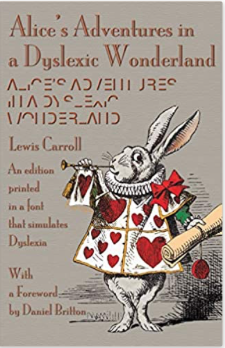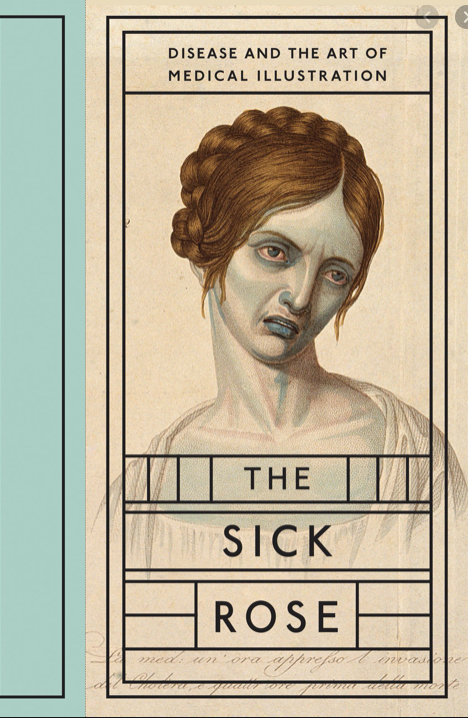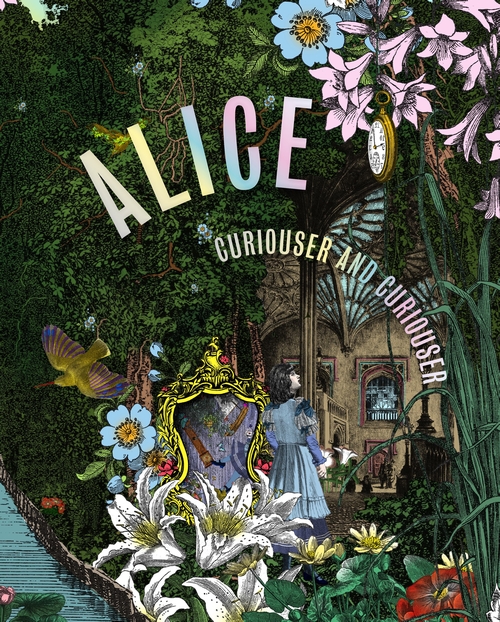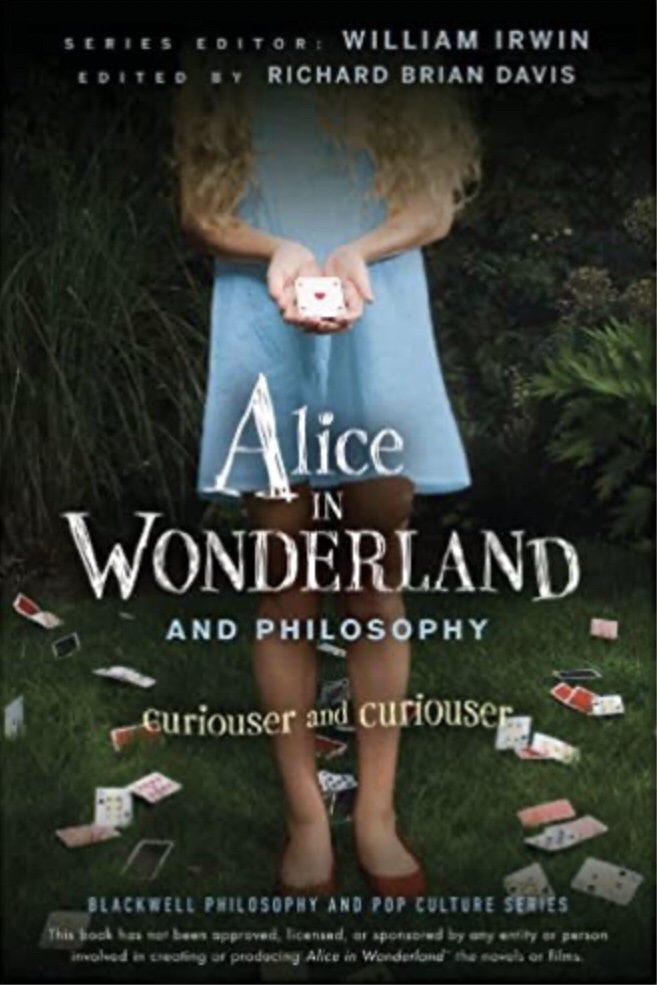Within this piece I am going to attempt to investigate the subject of Alice in wonderland syndrome, a rare disorder affecting perception. In order to do this effectively, I will first need to confront some concepts including what is perception? So that we have some sort of baseline understanding, prior to exploring what perception is like when it gets distorted. What are the different types of perception? And therefore, how AIWS(Alice in wonderland syndrome abbreviated) affects perception of the world.

What is perception?
Okay so what is perception? As I’m sitting here writing my perception includes temporality, my concept of time, spatiality, my concept of space and my surrounding area, and myself, my concept of my body and of all the experiences that make up my history, my imagination, my concepts, my thought processes, world view, learning, social context, role, and social status. There are two aspects here regarding the body, the mental processing of the world – how I see things – then there is the physical and sensory perception of the world, that includes my experiences within my body and through my body.
Philosophers have been attempting to distinguish between the mind and body dualism for hundreds of years. The problem with perception is it is indivisible from the concept of self. Whilst many scientists and philosophers have tried to objectify the nature of perception, it is truly impossible to exclude all of the factors, or the multifarious variables that create the individuals experience of the world.

Upon reading The phenomenology of Perception by Merleau Ponty, Ponty attempts to explain that the empiricists view, a concrete objective or factual interpretation on perception was not enough, as it by passed all Human experience. As many of the sciences tried to objectify this concept; it would leave a shell-like representation of perception devoid of any meaningful relationships to being human. Whilst there is great need to clarify and simplify something as complex as perception, reductionism in a empiricists sense or world view, just leaves us with a too watered-down concept that bares no relationship to reality.
Merleau Ponty combined the study of phenomenology with Psychology, philosophy and case studies of lived experience and attempted to highlight the specifics of perception through these means. So how is perception different from anything else? I saw a video about why writing is so difficult today (1.Link below), I think the analogy used within that video is pertinent here. In effective writing, many writers explore the idea that there are 2 separate people involved in that process. One is the hippy like, arty farty, creative person, full of inspiration and love with a fascination of the world (System 1). The other is like a miserable middle manager, asking what’s the point of everything? and what are you doing? Basically, functioning as the inner editor (System 2). I think our perception of the world is akin to system 1, our unconscious and tacit understanding of the world through our sensory experiences. Consciousness, I believe, is the part of ourselves that is self-aware or system 2, that middle management editor.
Perception is a highly complicated subject that has only had minimal studies in the past, it’s still not that well understood. Often the easiest method to study something is when it goes wrong i.e. when people have a stroke, head injury, encephalitis, epilepsy or other health ailments that affect perception.
Two of the health ailments associated with perception, I have a particular interest in are often linked 1) being; Alice in wonderland syndrome and 2) Being; Migraines. It has been suggested that Lewis Carroll may have suffered with both, which makes for interesting conjecture for whether Alice’s experiences in wonderland, where based on his own perceptual experiences?
Migraines
So, let’s explore Migraines first, how they work and what can happen. Interestingly in an article I was reading the other day, Migraines used to be considered a type of seizure back in Victorian times, which I never realised before(2 Link below). Migraines are not really that well understood regarding why they happen. They are a type of headache that has a whole multitude of other symptoms and effects ranging from something that can last for an hour, days or weeks. Often an intense headache accompanied by sickness, sensitivity to light and sound just to name a few of the plethora of symptoms. There are obscure types of Migraines like Hemiplegic Migraines (3 Link below) whereby the person experiences stroke like symptoms, including paralysis of parts of the body, speech is affected and the ability to communicate is often disturbed greatly. Whilst some types of Migraine are generally related to head pain, others have a preliminary factor, almost like a warning factor, called an aura. Aura’s can take many different forms, and interestingly are also the precursor to various types of seizure. Sometimes the aura, is just visual, a crazy display of light and zig zagging lines will start in somebody’s visual field heralding the onset of a Migraine, but in other cases sound can become heightened or there is a sense that everything becomes crystal clear, like super heightened senses. Many types of Aura are also attributed to epilepsy also as an aura before a seizure the famous ones being: Smelling burnt toast, or seeing flashing lights etc.
Alice in wonderland syndrome
There is a link between Migraines and AIWS, so what is Alice in wonderland syndrome?This excerpt is taken from the Wikipedia page:
‘Alice in Wonderland syndrome (AIWS), also known as Todd’s syndrome or dysmetropsia, is a neuropsychological condition that causes a distortion of perception. People may experience distortions in visual perception of objects such as appearing smaller (micropsia) or larger (macropsia), or appearing to be closer (pelopsia) or farther (teleopsia) away than they actually are. Distortion may occur for other senses besides vision as well.
Alice in Wonderland Syndrome (AIWS) is often associated with migraines, brain tumors, or psychoactive drug use’.(4 Link below)
As you can see by this description, AIWS is very much linked to visual and sensory perception. Upon reading a publication on the website, Neurology and clinical practice, there was a very interesting quote about the symptoms of AIWS(5 Link below):
‘What these symptoms have in common with each other is that they constitute distortions of sensory perception rather than hallucinations or illusions’.
This is an interesting distinction as it pinpoints the distortions are specifically to sensory perception and this distortion of actual perception rather than a fabricated or recreated reality (Like hallucinations). What fascinates me here, is these experiences obviously affect the reality of the person experiencing them, whilst not changing the outside world.
As someone who has suffered with Migraines my whole life, I know how frightening the experiences can be. My Migraines have changed over time with them getting progressively weirder as I have got older. Last year I read “ The Phenomenology of Perception” by Merlaeu Ponty(7) and the most meaningful quote from this I took away was this:
‘We must live things in order to perceive them’ (6)
This quote defines so much about us as human beings, it also states a lot about society and culture to me, as its very often the case that if someone has no knowledge of a particular ailment from personal experience, their understanding and therefore empathy towards that person is affected. I always remember when I first dislocated my knee, for the first time I was noticing how many others were on crutches. It’s a similar experience for someone who is pregnant, they will suddenly become aware of all the folks that are pregnant too. So, our perception is largely a reflection of the life we have lived and the sensory experiences within that life.

Conversations with Alice in Wonderland syndrome…
The concept of there being an ailment that is similar to Alice’s perceptual experience of the world, sort of blew my mind. As anyone will be aware from my last blog post, I am dyslexic and I had been posting my last article on various dyslexia pages on Facebook. To my utter joy and elation, I had a lady respond to my article. This particular lady was not discussing dyslexia, she suffered with AIWS.
‘I’m not dyslexic (my daughter is) and I actually have a condition called Alice in Wonderland syndrome. This condition is the result of having a very rare form of migraine that resemble a stroke. . I see things that aren’t there, I hear and smell things that aren’t there. Some things can look exceedingly massive and other things exceedingly small. My legs feel super long as if they are forcing their way through the floor and my hands look as big as the coffee table. Food doesn’t taste like what it actually looks like (coffee tastes like water, cake tastes like fish, fish taste like bacon) I get confused and hallucinate too as well as exceptionally vivid but ridiculously strange dreams. Lewis Carroll also suffered from Hemiplegic migraines and the books are fictional but based on his experience caused by the migraines. This part of the migraine was eventually called Alice in Wonderland syndrome.’
I contacted the this lady, Louisa Hewett, in order to have a conversation about her experiences with AIWS.
Fway: Thanks for reaching out, I am utterly fascinated by your condition. It must be bonkers having to deal with so many weird symptoms. Are you aware they are happening?
That’s my struggle with Migraines. I don’t know when I am having the prior symptoms
Louisa: it’s is bonkers. Most of the time I’m aware it’s coming but I’m not always aware that what I’m saying doesn’t make sense.
It’s very strange.
Fway: When did yours start?
Louisa: was terrified when mine started, but I’m not scared now, just seriously pissed off at how debilitating they are. I was 14. I’m 47 now.
Fway: Bloody hell. That’s a long time! Mine only suddenly changed a-few years ago. I have always had migraines, as a kid, it was the vomiting/dark room sort – lasting a week. As a teen, fainting was added into the equation. Then in my 30’s, suddenly I would lose time. Not know what I was doing. Drop stuff. Have black outs. And have very quick funny turns- speech would go slurry, feel like I’m slowing down, like being switched off. I slump, I can hear, but I can’t speak or move. Like sleep apnoea, when you’re awake.
Louisa: THIS!!!! I honestly believe you have hemiplegic migraines have periods where I get AIWS, then the pain starts, then I’m totally paralysed. I cannot move. I cannot even open my eyes . I am hyper aware of everything around me . A bird outside sounds like I’m sat in the middle of an iron maiden concert .my house could be on fire and I would know but couldn’t move a muscle.
Fway: Yes. Sound is enormous. Overpowering and crippling. Often if someone speaks, it makes me want to vomit- because it shudders through me. My senses are normally massively heightened before.
Louisa: I absolutely get you ! Alice in Wonderland syndrome is an aura I get. My husband says I look and sound as if I’m on a massive LSD trip.
Fway: Wow! That’s amazing
Louisa: Do you sometimes get all your symptoms but not have severe head pain?
Fway: Yes. Infact, they fractured off from each other. One used to definitely follow the other. Now, not so much. I’m often left stuck in the aura stage? Where I don’t know what’s going on, until after
Louisa: Me too! Although I’m aware of what’s going on most of the time. But can’t do anything about it !.
Fway: When did you find out you had AIWS? What were your symptoms? And how long did it take to diagnose it?
Louisa: I found out I had AIWS when I was in my early twenties. It took years and was such a relief to know I wasn’t losing my mind. The symptoms are seeing things that aren’t there, things including my own body parts look either huge or far too small, . My legs feel far too long and as if they are being pulled through the floor by my heels. I feel confused. I smell things that aren’t there, yet I firmly believe they are. I can also smell things that are not there and I have a permanent exceptionally heightened sense of smell. This never ever goes away.
Fway: What is your weirdest experience so far?
Louisa: I have so many weird experiences but the strangest was when I was pregnant with my daughter. I felt unwell and went to bed. I saw my husband walk past our bedroom door and go to our son’s room… Wearing clothes he hadn’t been wearing five minutes before. He had waved at me as he walked past. I was weirded out and went into the hall but he wasn’t in our son’s room. He then appeared behind me, wearing the clothes he was wearing last time I’d seen him. He could not have gotten passed me, gone downstairs and changed his clothes because I’d have seen him and the whole thing took just a few seconds.
Fway: do you have any warning signs before you have an attack of AIWS? And how long does it last?
Louisa: Mostly there is no warning, but sometimes there is. My AIWS is an aura, it’s what I get as a precursor to getting a Hemiplegic migraine. When I get AIWS I know I need to act! The AIWS can last for half an hour right up to a day or two.
Fway: Have you ever connected with other folks that suffer with AIWS?
Louisa: Not really. People think I’m barking mad and making it up! Trust me, I’d rather not have it!
Fway: is there anything you can do to reduce symptoms? Eg I suffer with Vertigo sometimes, which needs medication. Can they help your symptoms at all?
Louisa: The only thing I can do is follow my hemiplegic migraine protocol. Nipping the migraine in the bud can slowly stop the AIWS. Other times I follow the protocol and it just keeps going, even if I’ve stopped the migraine from progressing.
Fway: What would you say is the most confusing or disorientating part of this condition?
Louisa: Nowadays I’m used to it and will stop and think ” ahhh, that’s not really there, or no my hand really isn’t the size of my head ” even if it feels that way! But in the early years it was very frightening indeed. However, it’s being in public when it hits that I find disorientating. People might notice I’m not right or babbling or appear like a drunkard. Trying to tell them, no I’m not drunk, I’m unwell and could someone please get me an exceedingly strong coffee and some painkillers is impossible. Getting abuse for being drunk in public when I’m desperate for help is disorientating and frustrating!
Fway: What insight do you feel it gives you? As you experience perception in a very alien way- compared to most people’s understanding, how do you think that’s changed you?or what has it done to alter your perception in the long term?
Louisa: Perception to me is a curious thing. I will often see things and wonder if I’m seeing things at that moment in the same way as everyone else. And those famous words, curiouser and curiouser are me when I see things and people tell me they are seeing things differently.
I feel as if I never take things for granted and worry that one day, I will fall into the hole so far that my perception remains in the other dimension permanently.
In conclusion, I find it fascinating that so many aspects of our normal everyday perception of the world is dependent on our senses and yet those senses can, occasionally deceive us. The nature of this can completely question the nature of reality, for anyone who suffers with conditions like this. It also outlines how different and distinct each individual’s perceptual experience of the world can be. Outside of specific health conditions, we can see this when various meme’s about colour differentiation started to happen, whereby some see green and gold and others see blue. Another example of altered perception could be considered a more psychological disintegration from self, would be something like Body Dismorphia, whereby the persons perception and conception of self-differs from reality.
Links:
(1) Why writing is hard? Youtube video by Damien Walter:
(2)A very interesting article about types of seizures, aura, Migraine and Epilepsy.
https://www.epilepsy.com/learn/types-epilepsy-syndromes/temporal-lobe-epilepsy-aka-tle
(3) An interesting and informative description of Hemiplegic Migraine’s
Hemiplegic migraine – The Migraine Trusthttps://www.migrainetrust.org › about-migraine › hemi…
(4) The Wikipedia description of AIWS:
(5) Neurology Clinical practice website: Alice in wonderland syndrome A systematic review:
(https://cp.neurology.org/content/6/3/259)
(6) Merleau Ponty, The phenomenology of Perception:
P340, Line 8.
(7) The Wikipedia page about The Phenomenology of Perception by Merleau Ponty:
Phenomenology of Perception – Wikipediahttps://en.wikipedia.org › wiki › Phenomenology_of_P…
(8) For a more in depth study of The phenomenology of Perception:
https://plato.stanford.edu/entries/merleau-ponty/#NatuPercStruBeha
First 2 images are from:
Alice’s adventured in wonderland Decoded by David Day:
3rd Image is from: 150th Anniversary deluxe edition, The Annotated Alice, Lewis Carroll. Edited by Martin Gardiner, expanded and updated by Mark Burstein:














